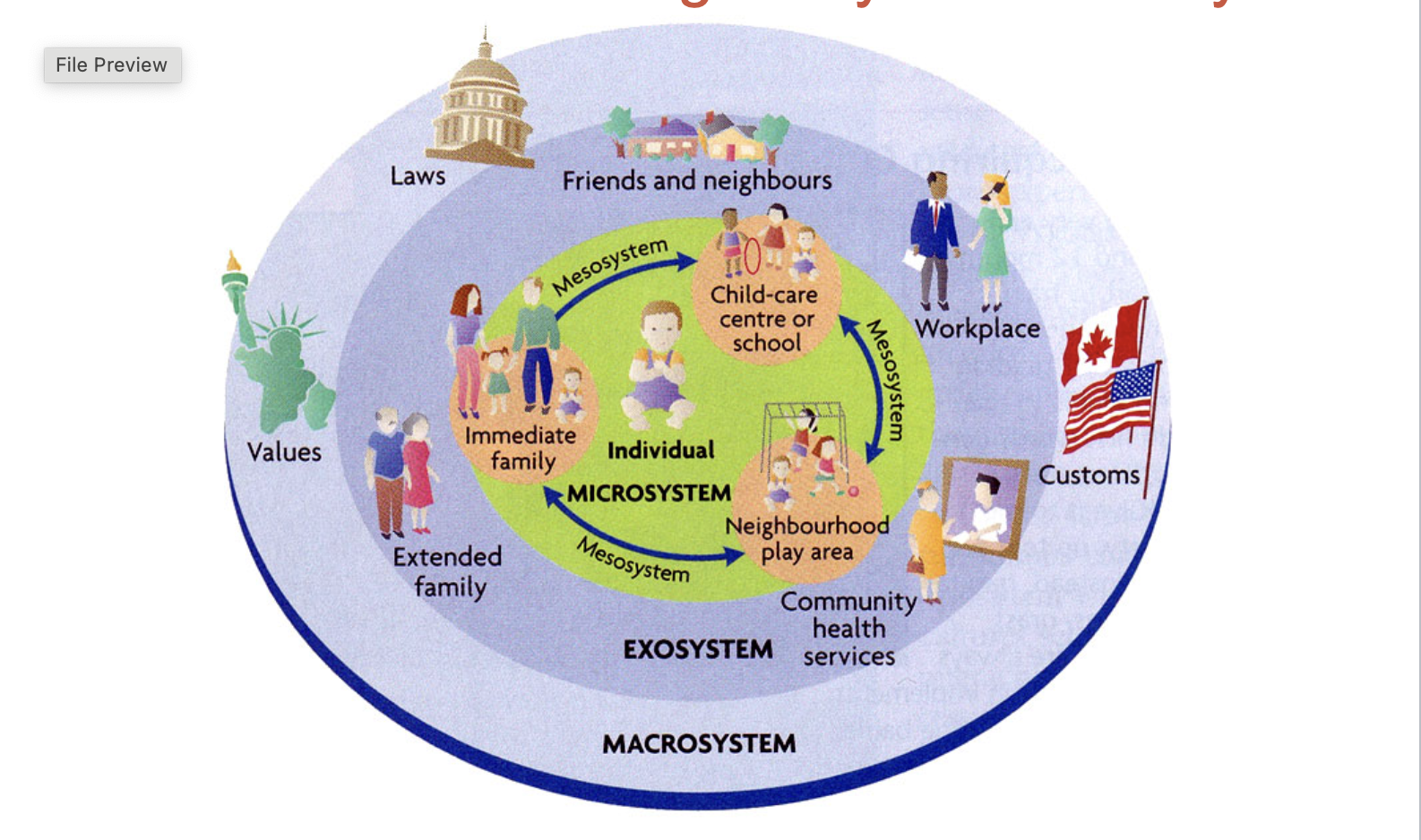Class 1, 2, 3
1/31
Earn XP
Description and Tags
P
Name | Mastery | Learn | Test | Matching | Spaced |
|---|
No study sessions yet.
32 Terms
Clinical Care
prevention, treatment, and management of illness and the preservation of mental and physical well-being through the services offered by medical and allied health professions; also known as health care
Determinant
factor that contributes to a condition, usually beyond an individual’s control is when it is a social determinant
Disparities
Unequal rates of disease, risks, exposures
Health Outcome
a medical condition that directly affects the length or quality of a person’s life
Ecological Systems Theory*
Explains how a person’s development is influenced by different types of environmental systems that interact with each other. Individual’s behavior and development are shaped by their relationships, surroundings, and broader society
5 levels/systems of this theory: microsystem, mesosystem, exosystem, microsystem, chronosystem

Microsystem
the immediate environment where direct interaction occurs - such as family, school, friends, teachers, & neighbors. These relationships have the most direct impact on the person’s daily life
Mesosystem
The connections between Microsystems - for example, how a child’s home life interacts with their school life. Positive communication between parents and teachers is an example of a strong mesosystem
Exosystem
External settings that don’t involve the person directly but still affect them. For instance, a parent’s workplace stress might influence the home environment
Macrosystem
The larger cultural and societal context, including laws, values, traditions, and social norms. These shape how all other systems operate and influence development.
Individual SDOH Examples
Income, Education, Race/Ethnicity, Age, Gender, Literacy, Employment, Healthy Child Development, Personal health practices
Environmental SDOH Characteristics
Housing conditions, working conditions, physical environment (safety, availability of healthy options), food safety, water quality, Income inequality, Social norms, Transportation
Immediate Social Contexts SDOH
Child abuse and neglect
exposure to violence e
early life conditions
parental characteristics
living in poverty
racism/sexism/homophobia
food insecurity
Political/Cultural SDOH
Public policies
laws/regulations
cultural practices
racism/sexism/homophobia
wars, displacement
Institutionalized racism
unfair access to opportunities, housing, education or healthcare
Personally mediated racism
prejudice and discrimination between individuals
Internalized racism
when people accept negative beliefs about their own racial group. these levels reinforce one another, sustaining inequality
3 types of racism
Institutionalized racism, personally mediated racism, internalized racism
5 Steps to Addressing a Public Health Issue in a Community
define health problem
identify risk factors
develop and test interventions to address the problem
implement the interventions
monitor interventions to assess their effectiveness
3 Core Functions of Public Health
Assurance, Assessment, Policy Development
10 Essential Public Health Services*
Assess and monitor population health
Investigate, diagnose, and address health hazards and root causes
(1 & 2 are assessment)
Communicate effectively to inform and educate
Strengthen, support, and mobilize communities and partnerships
Create, champion, and implement policies, plans, and laws
Utilize legal and regulatory actions
(3,4,5 are policy development)
Enable equitable access
Build a diverse and skilled workforce
Improve and innovate through evaluation, research, and quality improvement
Build and maintain a strong organizational infrastructure for public health
(7,8,9,10 are assurance)
Equity is in the center for all functions
Controversies of Public Health
Political Interference with Science (CDC for example)
Vaccine Controversy, Mask mandates
Public health challenges the status quo
Potential for negative economic impact
Potential for the restriction of individual freedom
moral and religious controversies
Political pressures impact public health process
Non-Governmental Organizations (NGOs)
Any non-profit, voluntary citizens’ group which is organized on a local, national, or international level
works independent of the government to address social, health, environmental, or humanitarian issues
Frameworks of prevention
structured way of thinking about how, when, and for whom to take action to prevent disease or promote health
Levels of Prevention
Primary, Secondary, Tertiary
Primary Prevention
prevents disease before it happens (vaccinations, healthy diet campaigns, sanitation)
Secondary prevention
Detects and treats disease early to stop progression (screenings, blood pressure checks)
implemented after a disease has begun, but before it is symptomatic
early identification through screening and treatment
Tertiary prevention
Reduces complication or disability from existing disease (rehabilitation, chronic disease management)
Levels of Prevention by Risk
Universal prevention, selective prevention, indicated prevention
Universal Prevention
targets everyone in a population, regardless of individual risk
goal is to reduce overall incidence of disease and promote general health
Selective Prevention
targets subgroups of the population who are at higher-than-average risk of developing a disease
goal is to prevent disease in those more likely to be affected
example: providing extra counseling for teenagers in low-income neighborhoods to prevent smoking
Indicated Prevention
targets individuals showing early signs or symptom of a disease but who do not yet meet full diagnostic criteria
goal is to stop or delay progression of disease
example: screening for prediabetes and offering lifestyle programs to prevent type 2 diabetes